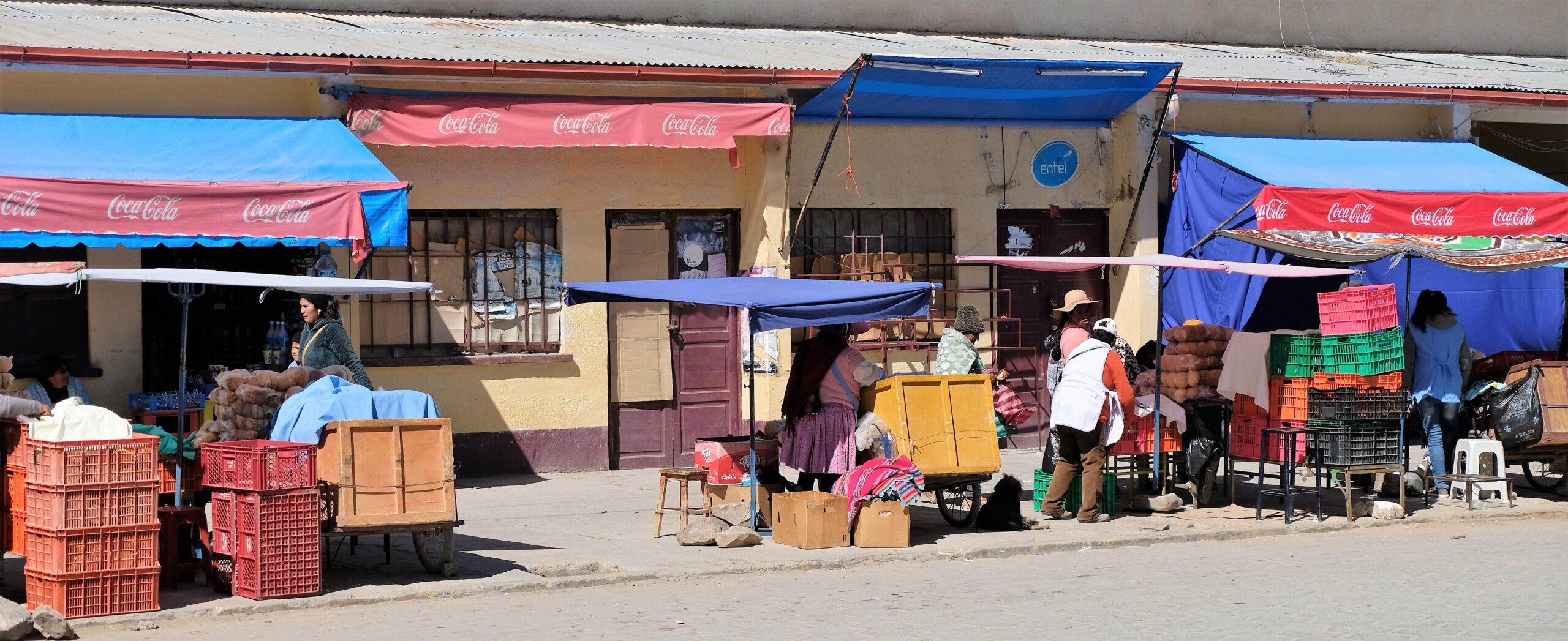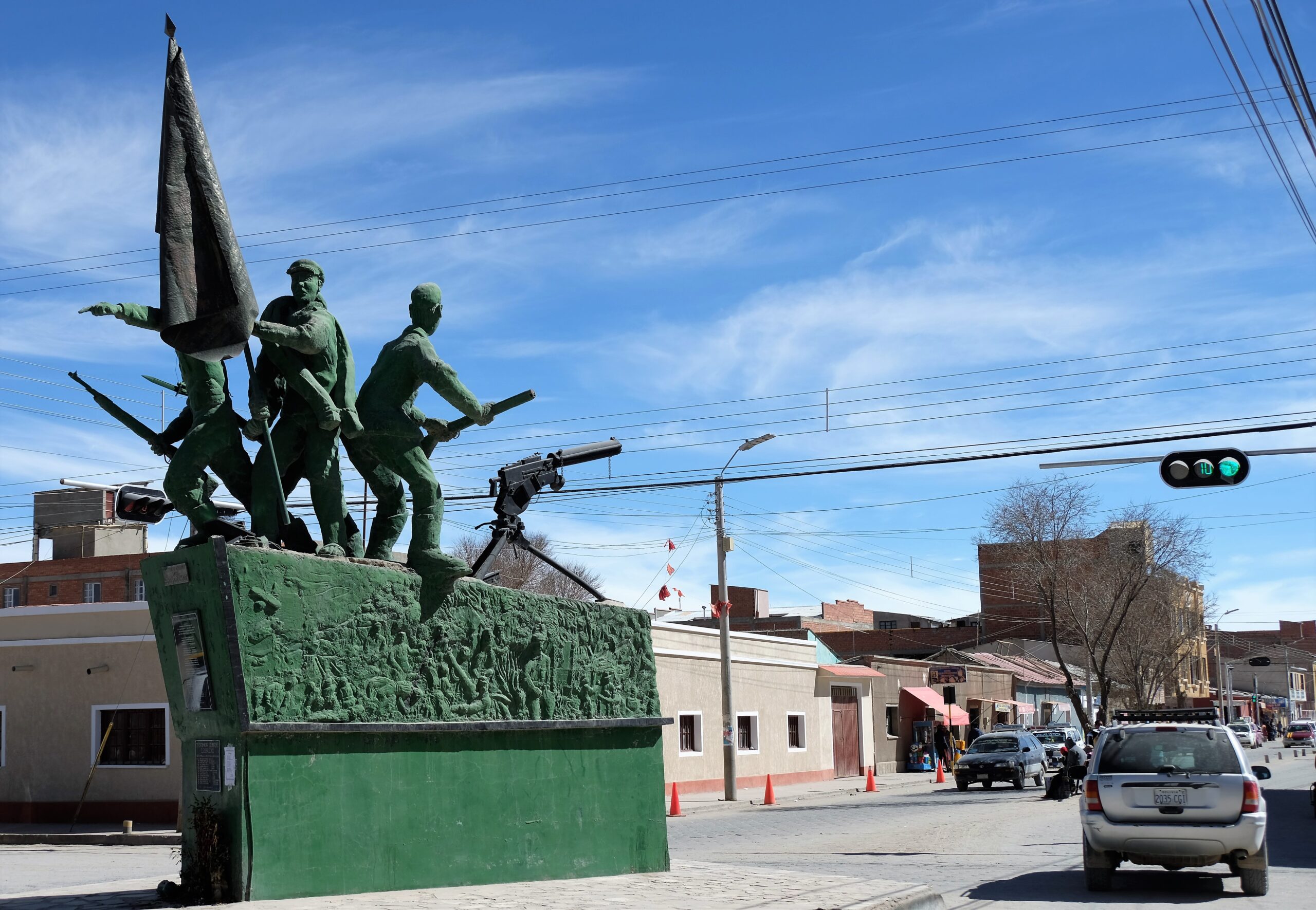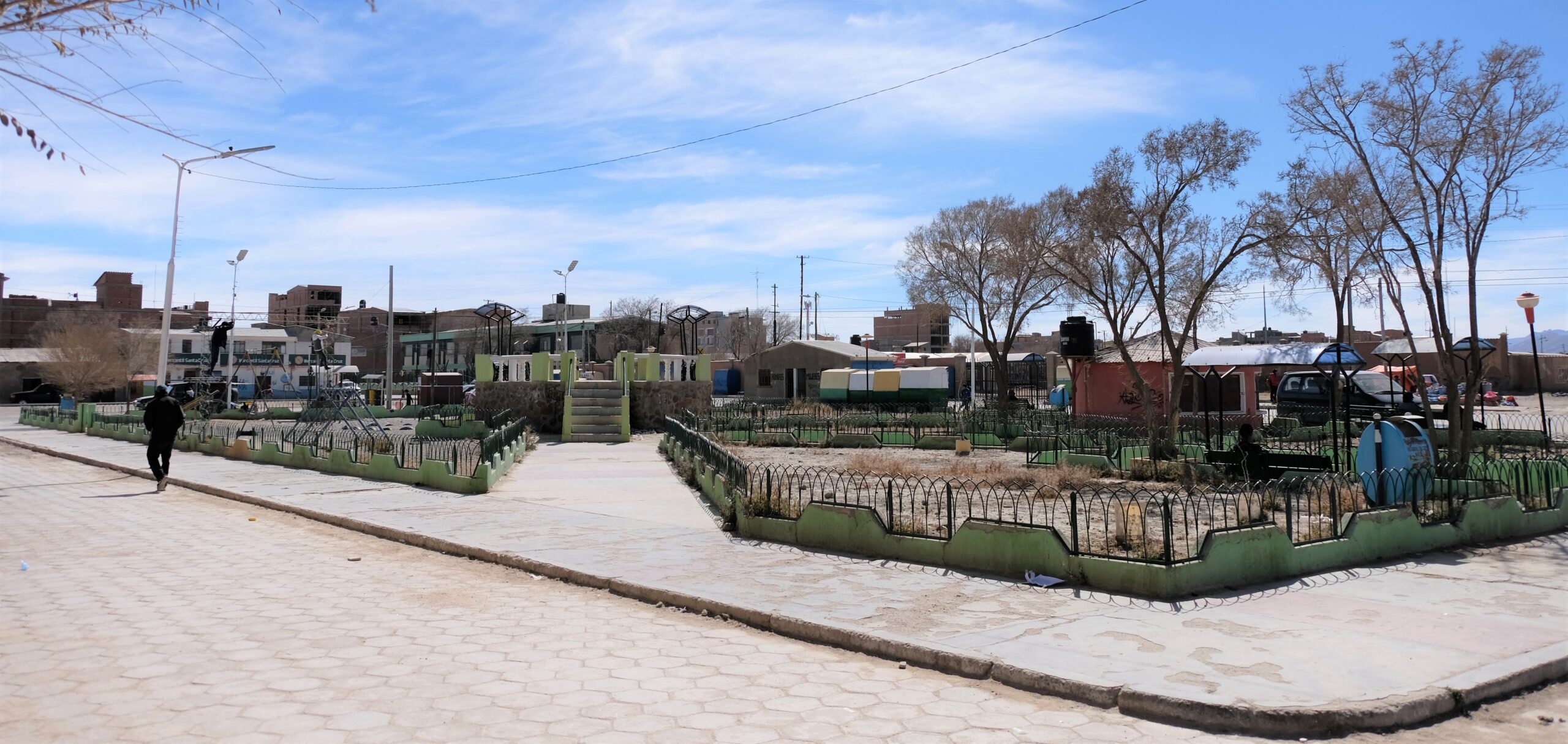Finally Uyuni was around the corner…albeit a 200km corner ?. It had taken me longer than I had wanted and anticipated so I was glad my destination was within grasping reach. Uyuni was the reason I left La Paz; my visits to Sucre and Potosi merely steppingstones on route to see Sala de Uyuni, the Uyuni Slat Flat. I had started to feel a little better, my energy levels were picking up. A lingering dry cough coming and going in fits every now and then but my last night in Potosi it only woke me up once.
As much as I was looking forward to revisiting my time in Uyuni, I am a little cautious, even a little nervous about doing so. This has happened before, when writing about Machu Picchu or Luxor & Karnak, other places too. It is to do these places the justice they deserve using my unprofessional grasp of my own language. Uyuni on the other hand is slightly different. This time it is more the visuals Salar de Uyuni offers. The vast space and sunsets like I have never seen before. Though I was only in Uyuni for 3 nights (2.5 full days) I’m thinking of breaking my time up into three blog posts. You may be thinking I’m trying to drag things out, I’m not. I’m trying to give the visuals the time and space they deserve. Maybe not this post, but the next two will have loads of photos. What doesn’t fit into the blog I’ll add to my Batnomad Facebook page.
Getting from Potosi to Uyuni
Not to contradict myself. I was feeling better, but not 100%. One nights’ good sleep helps, it isn’t a sign of a full recovery. I say this because I took the easy way to get from Hostal Patrimonio to the Potosi Bus Terminal…a taxi. It is only 2km away. My bus was leaving at 9:30 and an early walk didn’t tickly my motivation. There are a few options to get to Uyuni, you can even fly from La Paz and Sucre I believe. My choice was the bus. It takes anything from 3-4 hours dependent on weather etc. Cost wise, its cheap at US$11.41 which includes taxes and fees. I got my ticket through www.ticketsbolivia.com.
Potosi Bus Terminal did not inspire me with much confidence. Seeing some of the buses the locals were using I would not mark them highly on the roadworthy front. Added to their state they were being packed overflowing with luggage. After finding my bus operator I waited until my chariot arrived…to much relief my bus looked in perfect working order. I hate that I can be sceptical at times, and happy when my scepticism is proved wrong. There isn’t anything else to say about getting from Potosi to Uyuni. Easy to buy a ticket, bus was good, bus was half full, we only picked up a few more passengers along the way…but…

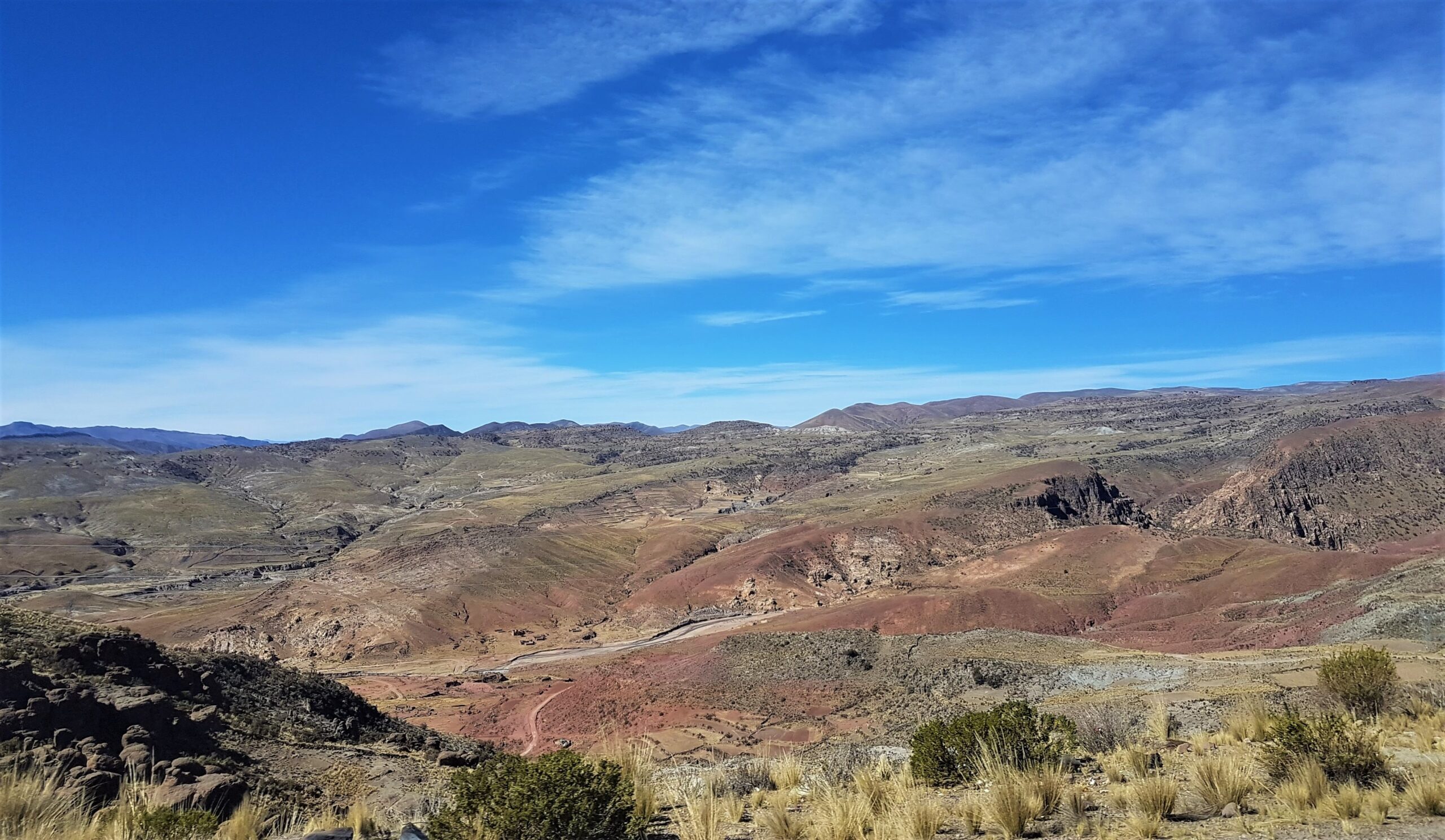
Route from Potosi to Uyuni
…the landscape along the route was beautiful! There were only a few tiny towns along the way, the biggest I guess had a population of less than on thousand. If I had known how stunning the landscape would be, I would have investigated staying a day or two somewhere along the way. In all honesty, the towns were so small it would not surprise me if they didn’t have any accommodation. I use the word “towns” very liberally, even village would be exaggerating. These villages were more like local settlements, though I’m guessing it could be settlements that have been there for hundreds of years.
Back to the landscape. From desolate valleys to flat plans with scattered sparse green shrub. Undulating hills to mountains. From barren rocky plains to stretches of rainbow mountains. Instead of exploring these places I was in a bus snapping away with my phone camera. There were at least three places that could match Rainbow Mountain in Peru; easily accessible, less than a kilometre from the road. For most of the route from Potosi to Uyuni could be a honey pot for tourist attractions, yet I was the only tourist on the bus. It has got to be one of the most enjoyable bus rides I have ever taken…why was the ride only 3.5 hours long! Road conditions were good, granted it looked very new, but there has been a road here for many, many years. In a country struggling financially this route could really boost their tourism!
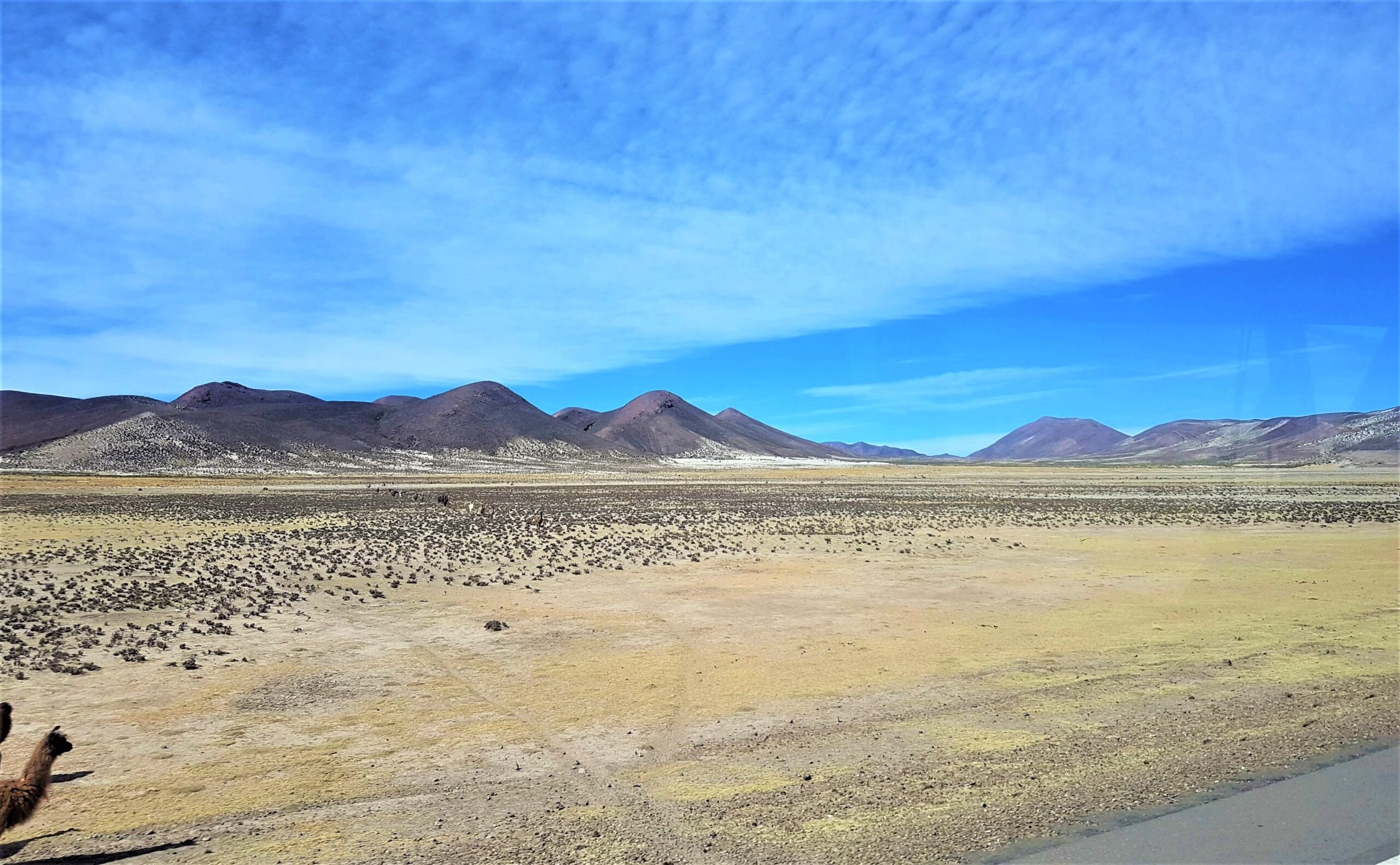

Arriving
The last 5km coming into Uyuni the road dissolved into a dusty path. In fact, the road seemed to disappear completely! Even when on a dirt road you can normally tell you are on a road, not here. The road as a metaphor is a perfect description for Uyuni. Why does this place even exist!? Now I’ve had a think back to my previous posts on Bolivia you may think I’m being harsh about the country, maybe even than I don’t like Bolivia. This could not be further from the truth. Easily, Bolivia has been one of the best countries I have ever been to. Some of my remarks may seem disparaging, they really are not meant in that way. I committed from the start of my blogging that I would honest and say exactly how I felt when I visited a place. Just because Bolivia is economically poor doesn’t mean I won’t say how I felt, nor sugar-coat things.
Uyuni is the first place upon arriving that I questioned if I was in the correct place. So many people have told be about Salar de Uyuni, surely this can’t be the town that services such a famous location!? It really does feel like you are in the middle of nowhere. Uyuni feels so remote and desolate that you’re amazed there is mobile phone reception. Of all the towns and cities I’ve ever been to, this was the first place where I couldn’t fathom why people would still live here. The air thin and dry with an ever-lingering dusty hue. You only need to be outside for a few minutes before your skin has a fine layer of sand stuck to it. Tarred roads seem to disappear then reappear as if consumed by dust and sand. Whereas other places I’ve been to, humans made do with their environment. Here, I cannot see any reason why people would choose to live here. This area is harsh, not meant to be inhabited.
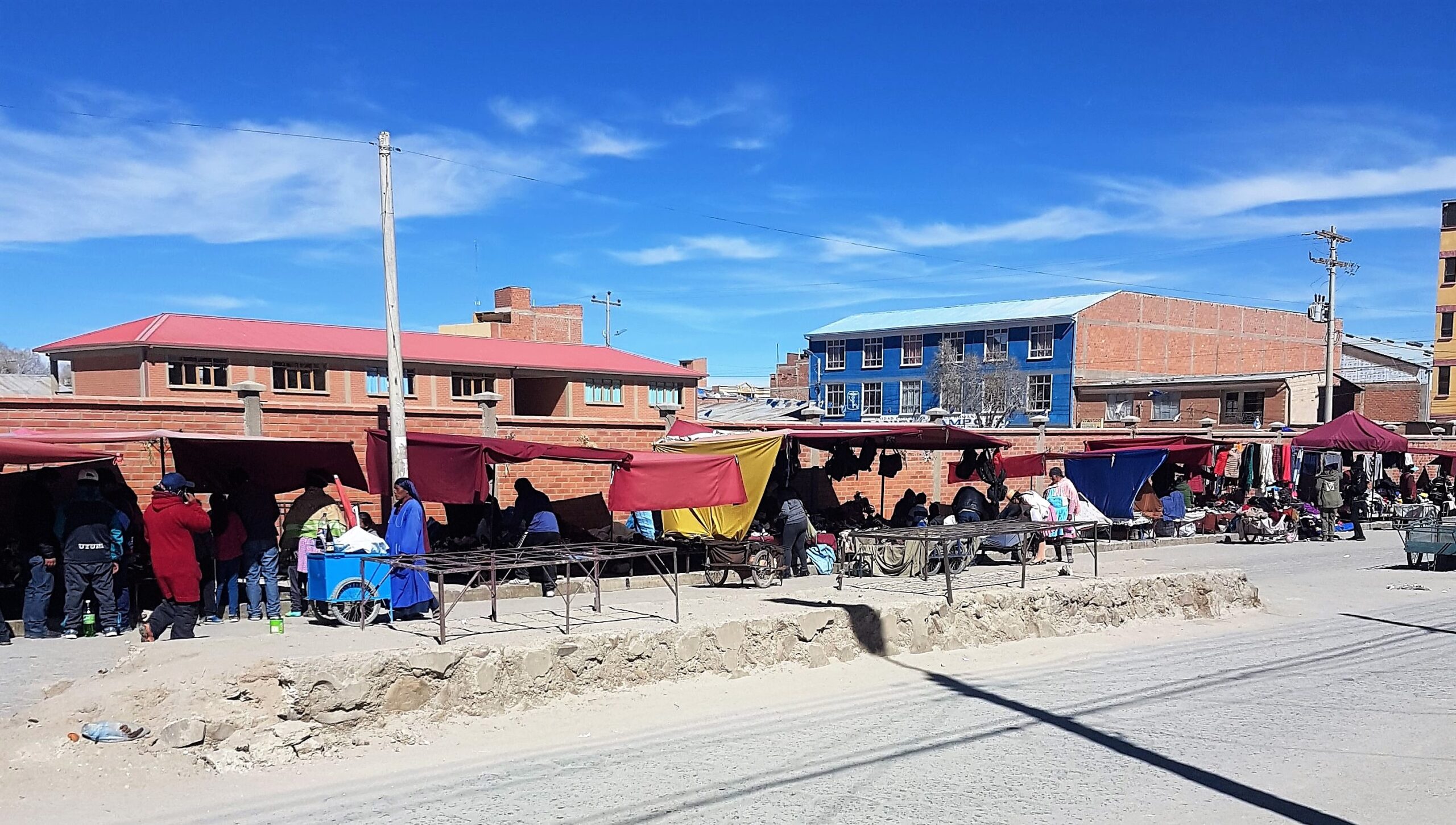
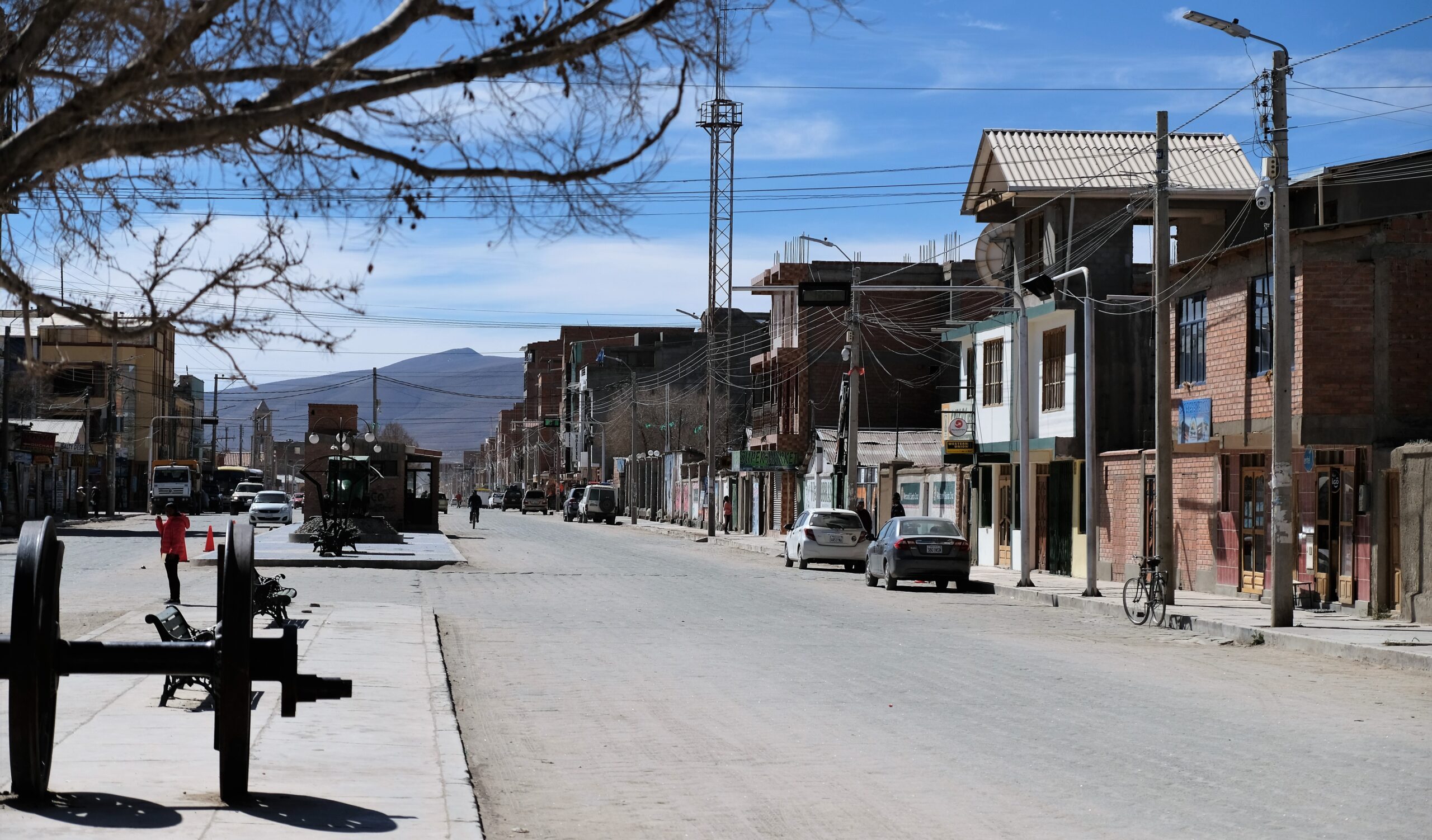
Accommodation
Accommodation in Uyuni seems uniform across the board no matter where you stay. Some places are obviously more expensive than others. Price difference isn’t much, though accommodation prices are higher than Potosi and Sucre mostly due to scarcity than varied star ratings. It’s not the kind of place people use to base themselves from or spend more than a few days. Accommodation is scattered throughout the town, with it being so small it doesn’t really matter how close to the town centre you are. If it’s restaurants and bars you are looking for then the area around the town Clock Tower (on Av Arce) is where to go. There’s a dozen or so bars/restaurants
Accommodation layout was just like Potosi; rooms built around a covered courtyard. The more you pay the more aesthetically pleasing, but I doubt there are any 3star hotels in Uyuni town centre. My place Oasisa-Blanco Hotel / Hotel Oasisa Blanco was fine. As you may have gathered by now (I hope), all I want is my own bathroom and a clean place. So Hotel Oasisa Blanco ticked all the boxes (FYI – they don’t have a web site). A bonus for the room was it had a little fridge…awesome to have nice cold water after a long day out in the sun. Four doors down was a little convenience where I treated myself to an ice cream and I stocked up on a few knick-knacks.
I’m not sure I ever met the owners. The lady that worked there tended to stay in her room; looked like she had been living in one of the B&B rooms for a long time. Her son, a young teenager tended to man the recaption desk. His English was the best, considerably better than my Spanish so that’s not saying much. When I needed something or had any questions, they were helpful, the language barrier was no barrier. To give you an idea of prices, my room was US$54 for two nights including breakfast. Breakfast wasn’t much but did the job
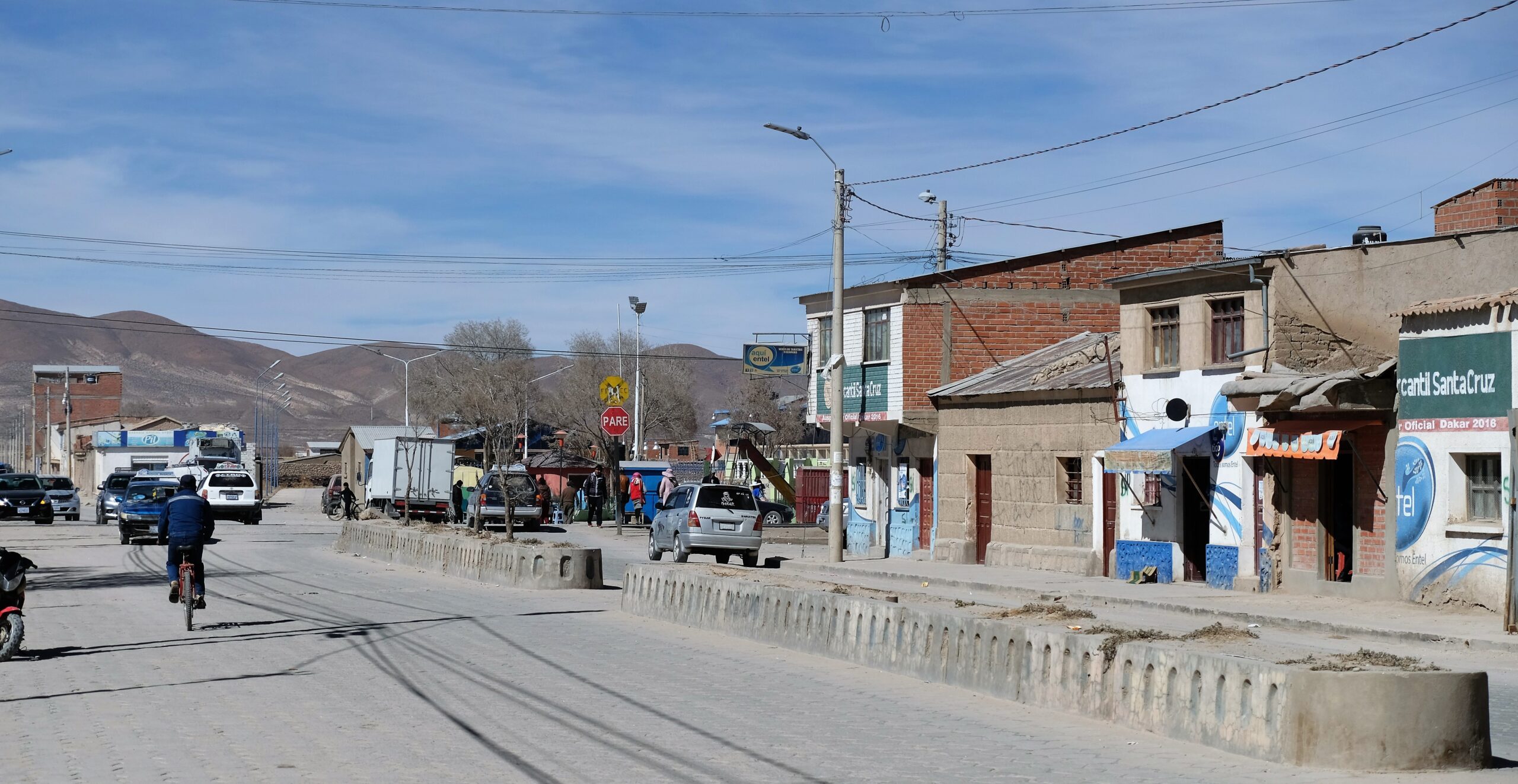

Uyuni
The town lies 3700m above sea level on an expansive plain, stretching our as far as they eye can see. Often referred to as a city, hardly a city with circa. 30 000 people. Uyuni as a town has been around since 1890, starting as a trading post which is still its function today. You wouldn’t think so, but Uyuni is a commerce gateway to and from Chile. By the looks of it they move dust and sand to and fro ?. There is a military base in the heart of the town, I couldn’t find out much about it but I believe this area used to be a training ground. Considering in years gone by there was hostility between Chile and Bolivia I guessed that had something to do with the military being here. Down Av. Ferroviaria just past Ruta Nacional 5 you are not allowed to take photos where the military regiment are stationed.
During the day, the town barely picks up to a bustle. The busiest parts are around the street markets, selling all kinds of fruit and vegetables. Considering Uyuni’s remote location, I was surprised at the quality of food being sold at the street markets; all looked super fresh and brought colour to their dreary surroundings. I am making Uyuni sound like the dregs of the planet. The place just isn’t the prettiest of places nor does it have much to offer as a town. 60 000 tourists come here every year to see Salar de Uyuni, the Uyuni Salt Flat and not Uyuni the town. Coming here to what feels like the middle of nowhere is well worth it because the salt flat is nothing short of spectacular!
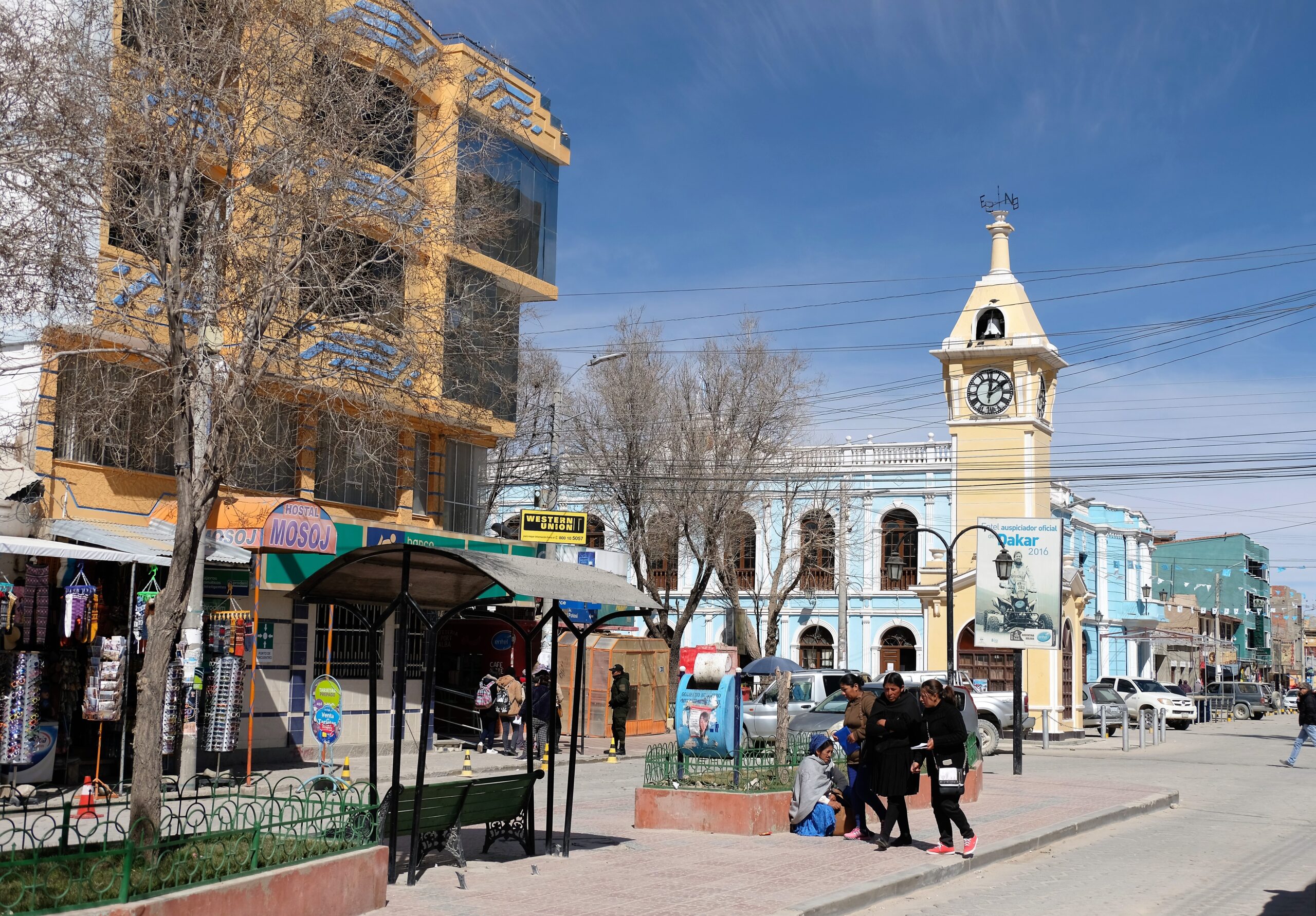
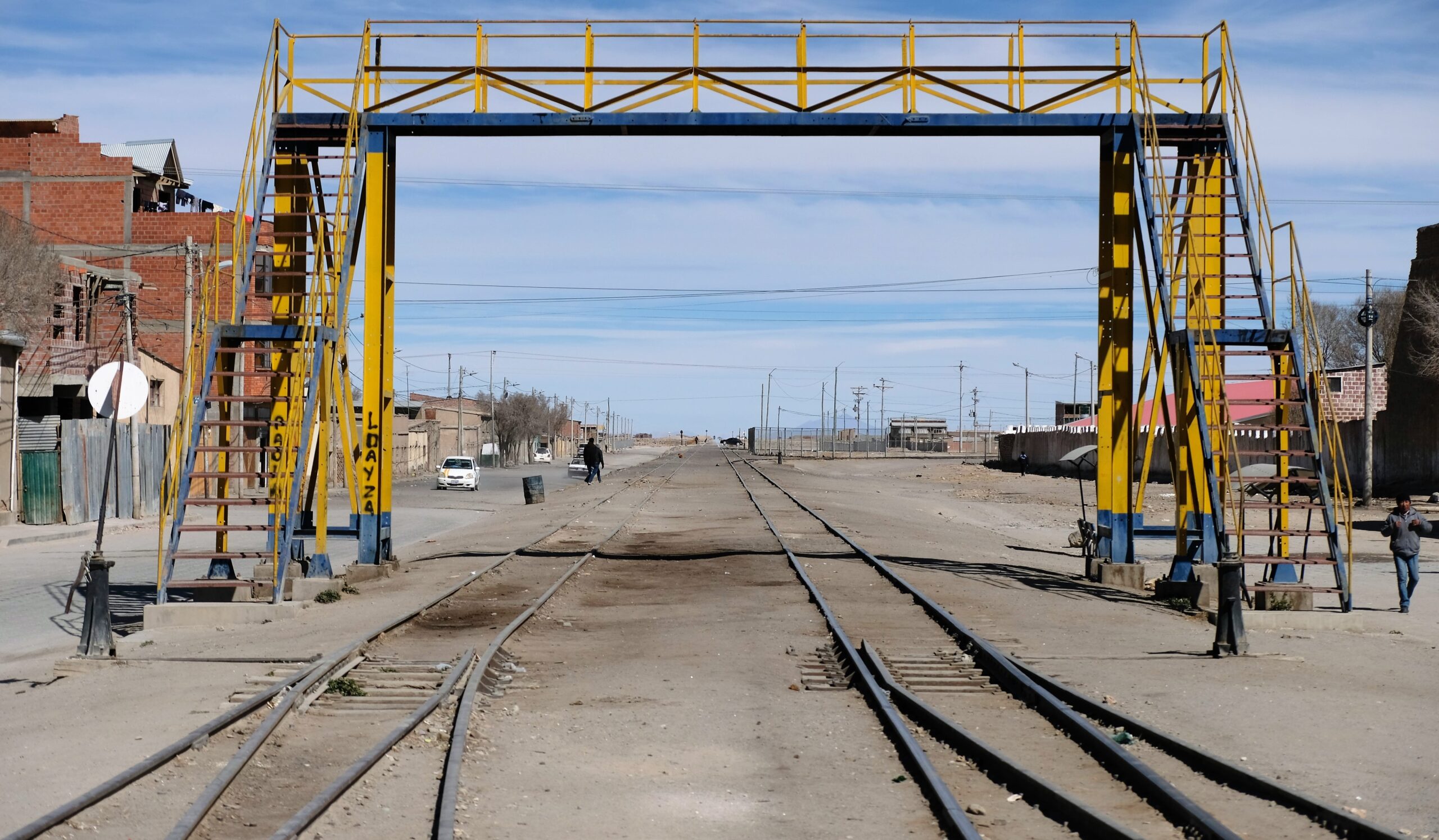
Food
I didn’t venture out exploring the food options, the pickings were slim. I did find the oddest place, Minuteman Pizza; a pizza restaurant at the back of Tonito Hotel. You have to walk through the hotel, at the back of the lobby (lobby – used very loosely) is a door…that leads you to Minuteman Pizza (location on the map). The food was good, but the setting and service is great. It’s a real traveller’s hangout of all ages and they know how to cater for weary people after a long day. If you’re looking for a nice atmosphere and to relax tired feet then I can definitely recommend Minuteman Pizza!
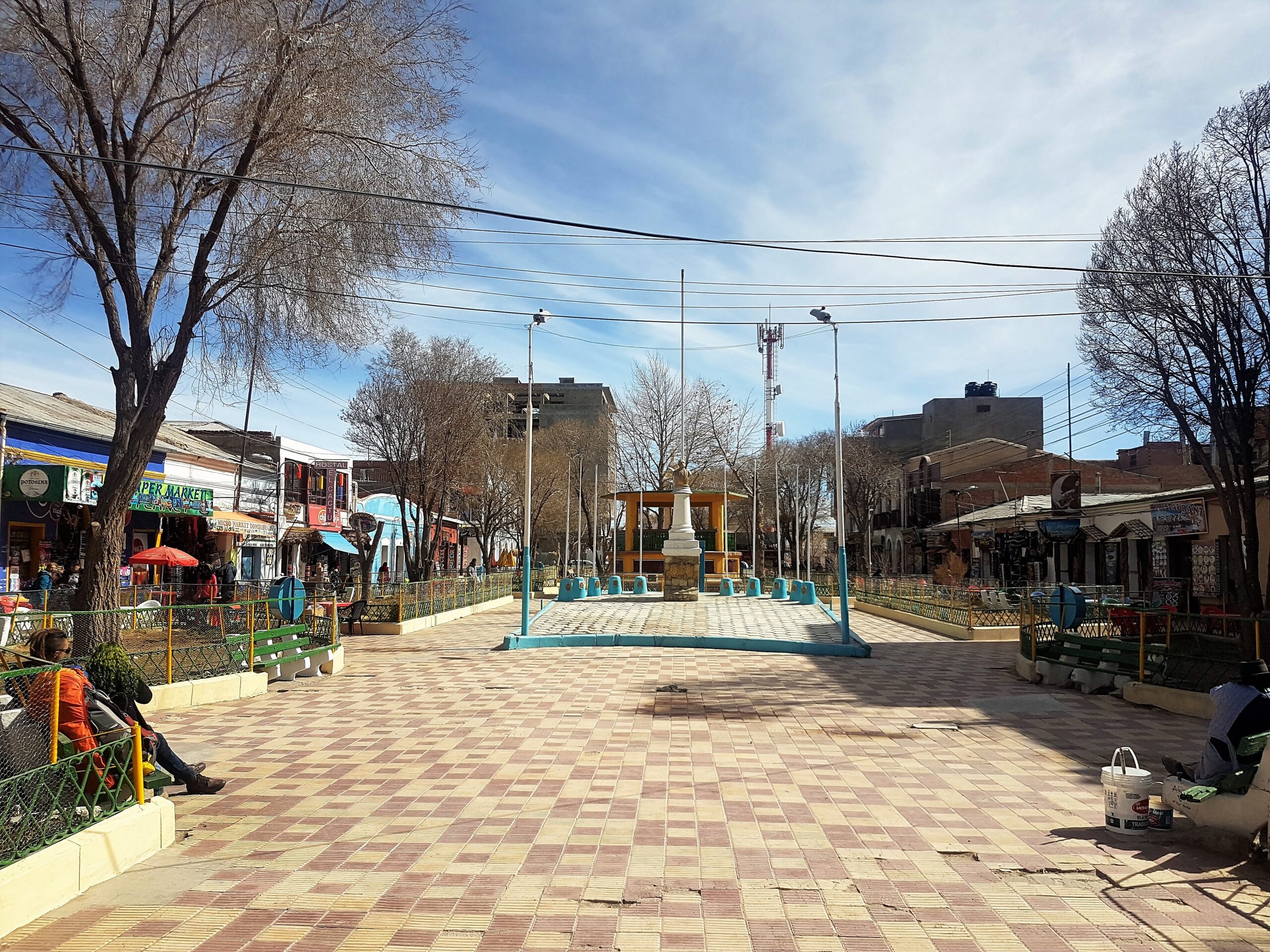
Arranging tours
I’m trying my best to get all the “admin” stuff out of the way before the next blog. That way I can focus on all the nice things and not get cluttered with the details. This is why I decided to include how I arrange my tours in this post. Mandy and Garry (from La Paz, Death Road etc.) had already done Uyuni so they sent me the details of the tour operator they use. I had WhatsApp messaged the gentleman (Paul) as soon as I arrive in Uyuni. Like the town itself progress in the initial arrangements took more than a day, meaning my day of arrival was spend strolling through the dusty streets. On my second day I was beginning to think Paul wasn’t going to get back to me. To his credit he did. Just an annotation, if I could speak English he could have arranged something almost immediately on the day I arrived.
Cutting a long story short, Paul arranged for e 1-2-1 tour with one of his freelancers, a lady by the name of Valeria. Individual tours of the salt flat can be pricy. To put things into perspective the price normally involves hiring a driver, 4×4 (essential) and a guide for the day – a full day tour normally includes a nice wholehearted lunch. Individual full day tours cost around US$200 per day. The cost for a sunset and stars only is around the same price.
Final words before the next blog post
As I’ve repeated myself a few times. This post was about Uyuni the town and the other boring things that often clog up my post…because of me not being succinct. I’ve done this intentionally as my next two days in Uyuni were, well, fantastic! I’m hoping that I will say less in the next two posts (…difficult task for me! ?) and let the pictures do the talking. No Uyuni is not a nice town, but the places around Uyuni are other worldly. The landscape as foreign as Mars and as vast as an ocean. I won’t contradict myself, I planned to stay in Uyuni for two nights, instead extended by another night. I would have extended a further night but again my insistent cough started up again GRRRR!
Not too many pictures in this post, fret not, there will be plenty in the next two. I’ll include a few more on my Batnomad Facebook with loads more to follow in the next two posts!



